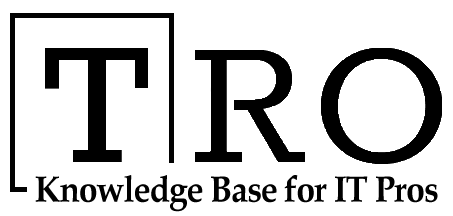Germany Develops New Technology to Bridge the Gap Between Blockchain and Euro
Recently, German authorities said that they have developed a technology that will allow investors to buy and sell securities on the blockchain. In return, they will get central bank money which will bridge the gap between the two worlds.
Around the world, private and public institutions have been experimenting with distributed ledger technology (DLT) for powering Bitcoin and other cryptocurrencies.
The Bundesbank recently partnered with the German government’s debt agency and Deutsche Börse for this project. On Wednesday, they said that the solution was to first allow those who sell securities on the blockchain to receive their proceeds on their account.
They also said, “technology could be scaled up to the entire eurozone shortly and well before the European Central Bank’s digital euro is launched.”
“The participants have demonstrated that it is possible to establish a technological bridge between blockchain technology and conventional payment systems to settle securities in central bank money with no need to create central bank digital currency,” the Bundesbank said.
A 10-year government bond was issued during the test on the blockchain. It was also by six banks: Barclays, Citibank, Commerzbank, DZ Bank, Goldman Sachs, and Société Générale on test mode.
These trades were settled with the help of a “trigger chain” on the blockchain. The trigger chain connects the assets with the euro zone’s payment system on the distributed ledger which is also known as Target 2.
In the next five years, the ECB is also exploring the creation of a digital euro to complement cash possibly based on blockchain.
However, the Bundesbank which has been skeptical on this project, says that it could destabilize the banking sector by drawing money at times of crisis.
Germany Develops New Technology to Bridge the Gap Between Blockchain and Euro
Recently, German authorities said that they have developed a technology that will allow investors to buy and sell securities on the blockchain. In return, they will get central bank money which will bridge the gap between the two worlds.
Around the world, private and public institutions have been experimenting with distributed ledger technology (DLT) for powering Bitcoin and other cryptocurrencies.
The Bundesbank recently partnered with the German government’s debt agency and Deutsche Börse for this project. On Wednesday, they said that the solution was to first allow those who sell securities on the blockchain to receive their proceeds on their account.
They also said, “technology could be scaled up to the entire eurozone shortly and well before the European Central Bank’s digital euro is launched.”
“The participants have demonstrated that it is possible to establish a technological bridge between blockchain technology and conventional payment systems to settle securities in central bank money with no need to create central bank digital currency,” the Bundesbank said.
A 10-year government bond was issued during the test on the blockchain. It was also by six banks: Barclays, Citibank, Commerzbank, DZ Bank, Goldman Sachs, and Société Générale on test mode.
These trades were settled with the help of a “trigger chain” on the blockchain. The trigger chain connects the assets with the euro zone’s payment system on the distributed ledger which is also known as Target 2.
In the next five years, the ECB is also exploring the creation of a digital euro to complement cash possibly based on blockchain.
However, the Bundesbank which has been skeptical on this project, says that it could destabilize the banking sector by drawing money at times of crisis.
Recently, German authorities said that they have developed a technology that will allow investors to buy and sell securities on the blockchain. In return, they will get central bank money which will bridge the gap between the two worlds.
Around the world, private and public institutions have been experimenting with distributed ledger technology (DLT) for powering Bitcoin and other cryptocurrencies.
The Bundesbank recently partnered with the German government’s debt agency and Deutsche Börse for this project. On Wednesday, they said that the solution was to first allow those who sell securities on the blockchain to receive their proceeds on their account.
They also said, “technology could be scaled up to the entire eurozone shortly and well before the European Central Bank’s digital euro is launched.”
“The participants have demonstrated that it is possible to establish a technological bridge between blockchain technology and conventional payment systems to settle securities in central bank money with no need to create central bank digital currency,” the Bundesbank said.
A 10-year government bond was issued during the test on the blockchain. It was also by six banks: Barclays, Citibank, Commerzbank, DZ Bank, Goldman Sachs, and Société Générale on test mode.
These trades were settled with the help of a “trigger chain” on the blockchain. The trigger chain connects the assets with the euro zone’s payment system on the distributed ledger which is also known as Target 2.
In the next five years, the ECB is also exploring the creation of a digital euro to complement cash possibly based on blockchain.
However, the Bundesbank which has been skeptical on this project, says that it could destabilize the banking sector by drawing money at times of crisis.

